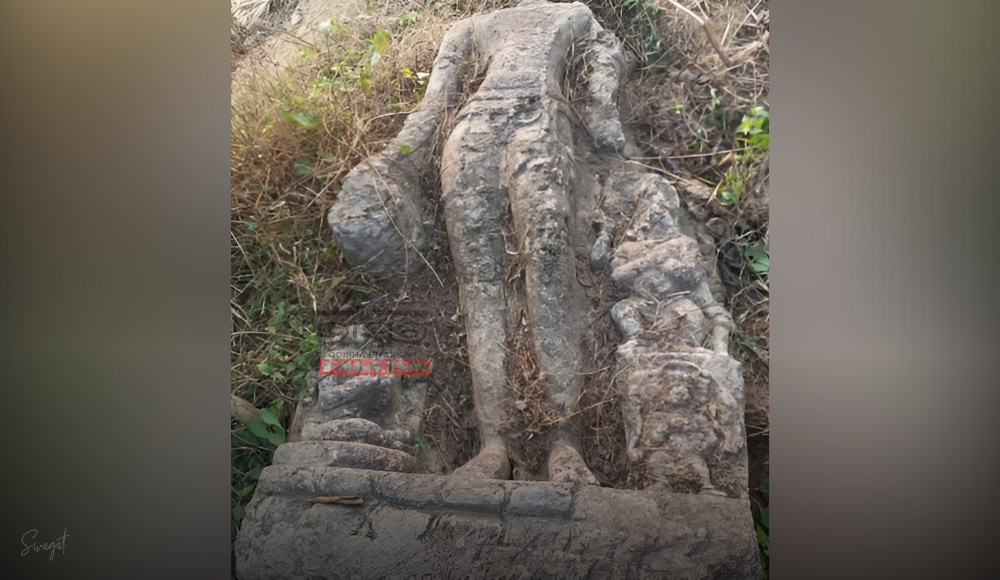Bhubaneswar: Archaeological discoveries near Ganeswarapur village in Odisha’s Cuttack district have unveiled remnants of a Buddhist site. The find includes a substantial headless Abalokiteswar image, about six feet tall, discovered recently near a small grassy mound within a rice field by the Odisha Chapter of the Indian National Trust for Art & Cultural Heritage (INTACH).
The iconography closely resembles Abalokiteswar images from nearby Buddhist sites such as Ratnagiri, Udayagiri, and Lalitagiri. Additionally, the site features remains of a temple base and various kiln-baked bricks, suggesting the possibility of a buried temple or stupa.
Located just 150 meters from the Birupa embankment, the village of Ganeswarapur sits within the floodplains of the Birupa River, known for numerous Buddhist sites along both banks. A preliminary survey conducted by a team including members from INTACH revealed broken potsherds alongside the archaeological finds.
INTACH has formally requested surveys of the area by experts from the Archaeological Survey of India (ASI), the State Archaeology Department and Culture Directorate. Anil Dhir, an INTACH member, emphasized the indication of flourishing Buddhism in the region in ancient times while stressing the need for systematic archaeological excavation to ascertain the exact period.
Similar Abalokiteswar images dating before the 9th century CE have been found elsewhere. Members noted signs of destruction at the site, likely attributed to invaders during the Afghan-Mughal period. Local accounts suggest temples in the village were destroyed in the 16th century CE by Kalapahada, the general of the Bengal monarchy.




Comments are closed.